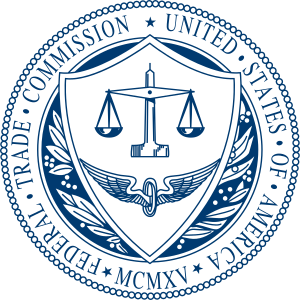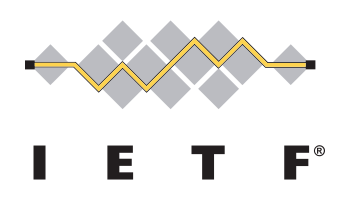In a case that parallels many of the aspects of the three cases filed in July 2012 in California, against Google & Yahoo!, retiree Wayne Plimmer of Sechelt, British Columbia filed a class action suit against Google on October 4, 2012.
Here is a copy of the complaint :
Download PlimmerV.Google
The suits alleges that Google has breached sections 1 and 3 of the British Columbia Privacy Act R.S.B.C. 1996 c. 373 and s.52 of the Federal Competition Act R.S.C. 1985 c. C-34
Some news coverage notes that the class has not yet been approved (anyone in British Columbia who has sent email to a Gmail account), and that should this lawsuit be successful, this may prohibit the use of anti-virus and anti-spam software on inbound mail. The suit also alleges that Google invaded users’ privacy, violated solicitor-client, physician-patient, pastor-penitent and journalist-source privilege, and infringed upon copyright.
CAUE President has blogged about the U.S. Federal and California cases here and here
The BC Privacy Act reads:
Violation of privacy actionable
Unauthorized use of name or portrait of another
3 (1) In this section, "portrait" means a likeness, still or moving, and includes
(a) a likeness of another deliberately disguised to resemble the plaintiff, and
Section 52 of the Competition Act of Canada is:
False or misleading representations
52. (1) No person shall, for the purpose of promoting, directly or indirectly, the supply or use of a product or for the purpose of promoting, directly or indirectly, any business interest, by any means whatever, knowingly or recklessly make a representation to the public that is false or misleading in a material respect.
Marginal note:Proof of certain matters not required
(1.1) For greater certainty, in establishing that subsection (1) was contravened, it is not necessary to prove that
(a) any person was deceived or misled;
(b) any member of the public to whom the representation was made was within Canada; or
(c) the representation was made in a place to which the public had access.
Marginal note:Permitted representations
(1.2) For greater certainty, a reference to the making of a representation, in this section or in section 52.1, 74.01 or 74.02, includes permitting a representation to be made.
Marginal note:Representations accompanying products
(2) For the purposes of this section, a representation that is
(a) expressed on an article offered or displayed for sale or its wrapper or container,
(b) expressed on anything attached to, inserted in or accompanying an article offered or displayed for sale, its wrapper or container, or anything on which the article is mounted for display or sale,
(c) expressed on an in-store or other point-of-purchase display,
(d) made in the course of in-store, door-to-door or telephone selling to a person as ultimate user, or
(e) contained in or on anything that is sold, sent, delivered, transmitted or made available in any other manner to a member of the public,
is deemed to be made to the public by and only by the person who causes the representation to be so expressed, made or contained, subject to subsection (2.1).
Marginal note:Representations from outside Canada
(2.1) Where a person referred to in subsection (2) is outside Canada, a representation described in paragraph (2)(a), (b), (c) or (e) is, for the purposes of subsection (1), deemed to be made to the public by the person who imports into Canada the article, thing or display referred to in that paragraph.
Marginal note:Deemed representation to public
(3) Subject to subsection (2), a person who, for the purpose of promoting, directly or indirectly, the supply or use of a product or any business interest, supplies to a wholesaler, retailer or other distributor of a product any material or thing that contains a representation of a nature referred to in subsection (1) is deemed to have made that representation to the public.
Marginal note:General impression to be considered
(4) In a prosecution for a contravention of this section, the general impression conveyed by a representation as well as its literal meaning shall be taken into account in determining whether or not the representation is false or misleading in a material respect.
Marginal note:Offence and punishment
(5) Any person who contravenes subsection (1) is guilty of an offence and liable
(a) on conviction on indictment, to a fine in the discretion of the court or to imprisonment for a term not exceeding 14 years, or to both; or
(b) on summary conviction, to a fine not exceeding $200,000 or to imprisonment for a term not exceeding one year, or to both.
Marginal note:Reviewable conduct
(6) Nothing in Part VII.1 shall be read as excluding the application of this section to a representation that constitutes reviewable conduct within the meaning of that Part.
Marginal note:Duplication of proceedings
(7) No proceedings may be commenced under this section against a person against whom an order is sought under Part VII.1 on the basis of the same or substantially the same facts as would be alleged in proceedings under this section.
- R.S., 1985, c. C-34, s. 52;
- 1999, c. 2, s. 12;
- 2009, c. 2, s. 414.
Definition of “telemarketing”
52.1 (1) In this section, “telemarketing” means the practice of using interactive telephone communications for the purpose of promoting, directly or indirectly, the supply or use of a product or for the purpose of promoting, directly or indirectly, any business interest.
Marginal note:Required disclosures
(2) No person shall engage in telemarketing unless
(a) disclosure is made, in a fair and reasonable manner at the beginning of each telephone communication, of the identity of the person on behalf of whom the communication is made, the nature of the product or business interest being promoted and the purposes of the communication;
(b) disclosure is made, in a fair, reasonable and timely manner, of the price of any product whose supply or use is being promoted and any material restrictions, terms or conditions applicable to its delivery; and
(c) disclosure is made, in a fair, reasonable and timely manner, of such other information in relation to the product as may be prescribed by the regulations.
Marginal note:Deceptive telemarketing
(3) No person who engages in telemarketing shall
(a) make a representation that is false or misleading in a material respect;
(b) conduct or purport to conduct a contest, lottery or game of chance, skill or mixed chance and skill, where
(i) the delivery of a prize or other benefit to a participant in the contest, lottery or game is, or is represented to be, conditional on the prior payment of any amount by the participant, or
(ii) adequate and fair disclosure is not made of the number and approximate value of the prizes, of the area or areas to which they relate and of any fact within the person’s knowledge, that affects materially the chances of winning;
(c) offer a product at no cost, or at a price less than the fair market value of the product, in consideration of the supply or use of another product, unless fair, reasonable and timely disclosure is made of the fair market value of the first product and of any restrictions, terms or conditions applicable to its supply to the purchaser; or
(d) offer a product for sale at a price grossly in excess of its fair market value, where delivery of the product is, or is represented to be, conditional on prior payment by the purchaser.
Marginal note:General impression to be considered
(4) In a prosecution for a contravention of paragraph (3)(a), the general impression conveyed by a representation as well as its literal meaning shall be taken into account in determining whether or not the representation is false or misleading in a material respect.
Marginal note:Exception
(5) The disclosure of information referred to in paragraph (2)(b) or (c) or (3)(b) or (c) must be made during the course of a telephone communication unless it is established by the accused that the information was disclosed within a reasonable time before the communication, by any means, and the information was not requested during the telephone communication.
Marginal note:Due diligence
(6) No person shall be convicted of an offence under this section who establishes that the person exercised due diligence to prevent the commission of the offence.
Marginal note:Offences by employees or agents
(7) Notwithstanding subsection (6), in the prosecution of a corporation for an offence under this section, it is sufficient proof of the offence to establish that it was committed by an employee or agent of the corporation, whether or not the employee or agent is identified, unless the corporation establishes that the corporation exercised due diligence to prevent the commission of the offence.
Marginal note:Liability of officers and directors
(8) Where a corporation commits an offence under this section, any officer or director of the corporation who is in a position to direct or influence the policies of the corporation in respect of conduct prohibited by this section is a party to and guilty of the offence and is liable to the punishment provided for the offence, whether or not the corporation has been prosecuted or convicted, unless the officer or director establishes that the officer or director exercised due diligence to prevent the commission of the offence.
Marginal note:Offence and punishment
(9) Any person who contravenes subsection (2) or (3) is guilty of an offence and liable
(a) on conviction on indictment, to a fine in the discretion of the court or to imprisonment for a term not exceeding 14 years, or to both; or
(b) on summary conviction, to a fine not exceeding $200,000 or to imprisonment for a term not exceeding one year, or to both.
Marginal note:Sentencing
(10) In sentencing a person convicted of an offence under this section, the court shall consider, among other factors, the following aggravating factors:
(a) the use of lists of persons previously deceived by means of telemarketing;
(b) characteristics of the persons to whom the telemarketing was directed, including classes of persons who are especially vulnerable to abusive tactics;
(c) the amount of the proceeds realized by the person from the telemarketing;
(d) previous convictions of the person under this section or under section 52 in respect of conduct prohibited by this section; and
(e) the manner in which information is conveyed, including the use of abusive tactics.
- 1999, c. 2, s. 13;
- 2009, c. 2, s. 415.

















